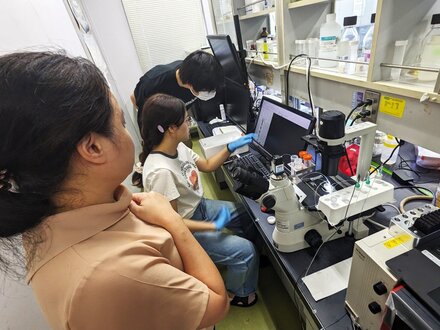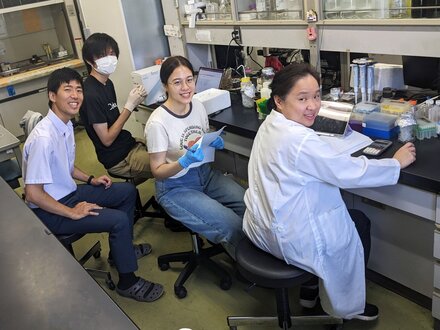News
5 Tokyo University of Marine Science and Technology Exchange Support Project Report 2023 to Promote International Collaborative Research
The "Tokyo University of Marine Science and Technology Exchange Support Project to Promote International Joint Research" aims to increase the number of external funds obtained for exchange projects that will lead to the promotion of international joint research, with the aim of internationalizing the university and advancing research. , supports part of the expenses required for international exchange by researchers at our university.This project was carried out under this project.
[Research topic title]
Single cell landscape analysis of shrimp immune response
【the purpose】
Prawns are actively farmed all over the world, especially in Southeast Asia, but they are often severely damaged by fish diseases.In order to understand how the body fights against pathogens, it is necessary to clarify the biological defense mechanism.Blood cells in body fluids are said to be important for the biological defense of shrimps.However, there are challenges in classifying and functionally analyzing blood cells.In this project, Dr. Somboonwiwat, an expert on shrimp biological defense, and Koho, who has single-cell analysis technology, collaborated to carry out single-cell analysis of how blood cells in body fluids change due to external stimuli. We conducted research with the goal of understanding cell populations that play an important role in biological defense mechanisms.
[Summary/Results]
From August 2023st to 8th, 1, we invited Dr. Somboonwiwat and Researcher Nanthajak from Thailand to conduct research at the Genome Science Laboratory at Tokyo University of Marine Science and Technology.Specifically, a single-cell mRNA-seq library was constructed using the Drop-seq method using blood cells of tiger shrimp stimulated by pathogenic bacteria or heat stress sampled in Thailand. Using two types of shrimp, Penaeus vannamei and Fenneropenaeus merguiensis, we succeeded in constructing a total of eight types of libraries within the time period.Currently, these eight libraries are being subjected to sequencing using a next-generation sequencer.In the future, we plan to analyze the data obtained from this sequencing result in each other's laboratories, and strive to submit it to international papers and develop it into international joint research.Furthermore, at the beginning of the experiment, both participants were confused about the operation of the microchannel used in Drop-seq, but one week before returning to Japan, they had mastered the experiment to the point that they could operate Drop-seq independently.In order to continue our joint research, it is important for both parties to have an accurate understanding of the same experimental protocols, so the fact that we were able to conduct experiments together in the same location through this project was a major accomplishment.We would like to express our gratitude to the Tokyo University of Marine Science and Technology Exchange Support Project for the Promotion of International Collaborative Research, which supported this project.
【Expected effect】
Analysis at the single-cell level reveals the behavior of blood cells when infected with pathogens.If this research makes it possible to maximize the immune function of shrimp, it will be possible to dramatically reduce the amount of antibiotics used.Furthermore, reducing the number of fish that die due to fish diseases can also contribute to achieving the SDGs and greenhouse gas reductions set forth by the government and the United Nations.
Dr. Somboonwiwat and researcher Nanthajak operate the Drop-seq microchannel under the guidance of Mr. Harada, a first-year master's student in the Genome Science Laboratory.
Single-cell mRNA analysis using the Drop-seq method is being performed at the Genome Science Laboratory at Tokyo University of Marine Science and Technology.From the right: Dr. Somboonwiwat, Researcher Nanthajak, Mr. Harada, and Assistant Professor Koyuki.






